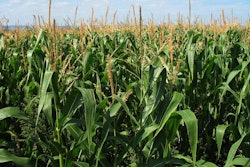
In its June World Agricultural Supply and Demand Estimates (WASDE) report, the U.S. Department of Agriculture (USDA) adjusted 2022/23 ending stocks but not much else.
- Increased old corn ending stocks to 1.452 billion, up 35 million bushels from May
- Soybeans were adjusted 15 million bushels higher to 230 million
- Wheat ending stocks for old crop were unchanged at 598 million bushels
Barchart noted the markets greeted the latest June WASDE report with a yawn, but said there is plenty of time for volatility over the coming months as the growing season continues.
"The ongoing war in Ukraine is a significant event as Russia and Ukraine are Europe’s breadbasket, can the Black Sea ports are a critical logistical export hub," said Barchart. "War has turned the fertile soil into battlefields and the ports into a warzone. The ongoing conflict pressures other growing regions to increase supplies to compensate for losses from the European agricultural hub."
WHEAT: The outlook for 2023/24 U.S. wheat this month is for larger supplies, unchanged domestic use and exports, and higher stocks.
Supplies are raised as all wheat production is projected at 1,665 million bushels, up 6 million from last month on higher Hard Red Winter production more than offsetting reductions in Soft Red Winter and White Winter.
The all wheat yield is 44.9 bushels per acre, up 0.2 bushels from last month but remaining below last year.
Total use is unchanged with all of the production increase added to ending stocks, now projected at 562 million bushels.
- The 2023/24 season-average farm price is lowered $0.30/bushel to $7.70 on larger U.S. and foreign wheat supplies.
The global wheat outlook for 2023/24 is for larger supplies, higher consumption, increased trade and larger stocks.
Supplies are projected to increase 10.8 million tons to 1,066.9 million, primarily on larger production for Russia, India, the EU, and Ukraine.
Russia is raised 3.5 million tons to 85 million, all for winter wheat, on generally favorable conditions after abundant spring precipitation. India is increased 3.5 million tons to 113.5 million, mainly on the government’s third advanced estimate. The EU is raised 1.5 million tons to 140.5 million on continued favorable winter wheat conditions for most of the EU member countries. Ukraine is increased 1 million tons to 17.5 million on favorable weather conditions in southern Ukraine but production remains below last year on reduced harvested area.
COARSE GRAINS: The 2023/24 U.S. corn outlook is little changed from last month with increases to both beginning and ending stocks.
Corn area and yield forecasts are unchanged. USDA will release its Acreage report on June 30, which will provide survey based indications of planted and harvested area. Beginning stocks are up 35 million bushels reflecting a forecast decline in exports for 2022/23 that is partly offset by lower imports.
Exports are lowered 50 million bushels, based on reported U.S. Census Bureau shipments through the month of April, export inspection data for the month of May, and expectations of competition from Brazil in the coming months. With no supply or use changes for 2023/24, ending stocks are raised 35 million bushels.
- The season-average farm price received by producers is unchanged at $4.80/bushel.
Global coarse grain production for 2023/24 is forecast 3.8 million tons higher to 1,513.3 million.
This month’s foreign coarse grain outlook is for larger production, trade, and ending stocks relative to last month. Corn production is raised for Ukraine, reflecting higher area based on data reported by the government. For 2022/23, corn production is lowered for Argentina but raised for Brazil. Foreign barley production for 2023/24 is slightly higher, reflecting increases for Ukraine, the EU, and Turkey that are partly offset by reductions for India and Iran.
Major global trade changes for 2023/24 include larger corn exports for Ukraine and increased imports for the EU. For 2022/23, corn exports are lowered for Argentina and the U.S. but raised for Ukraine, Brazil and South Africa.
OILSEEDS: This month’s U.S. soybean supply and use projections for 2023/24 include higher beginning and ending stocks.
Higher beginning stocks reflect reduced exports for 2022/23, down 15 million bushels to 2.0 billion based on lower-than-expected shipments in May and competition from South America.
With increased supplies for 2023/24 and no use changes, soybean ending stocks are projected at 350 million bushels, up 15 million.
- The soybean price is forecast at $12.10/bushel, unchanged from last month.
The 2023/24 global soybean outlook includes higher beginning stocks, lower crush, and higher ending stocks. Higher beginning stocks for the U.S. and Brazil are partly offset by lower stocks for Argentina. The stock revisions reflect 2022/23 production changes for Brazil, up 1 million tons to 156 million, and Argentina, down 2.0 million to 25.0 million.
Global crush for 2023/24 is lowered on lower crush for Argentina. Global 2023/24 ending stocks are increased 0.8 million tons to 123.3 million with higher stocks for the United States, Brazil, and the EU, which are partly offset by lower stocks for Argentina and Vietnam.
Read the full June WASDE here.
















